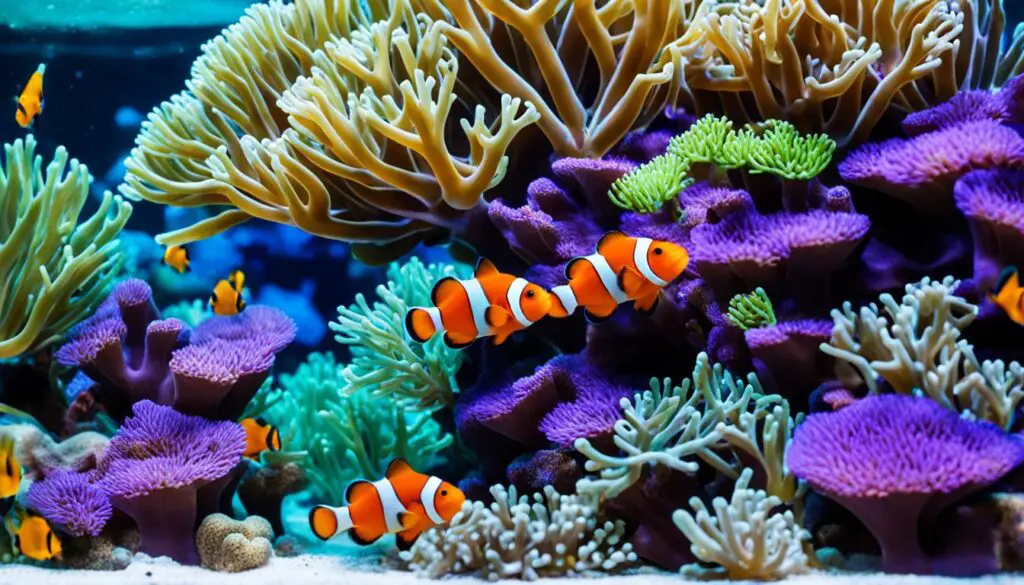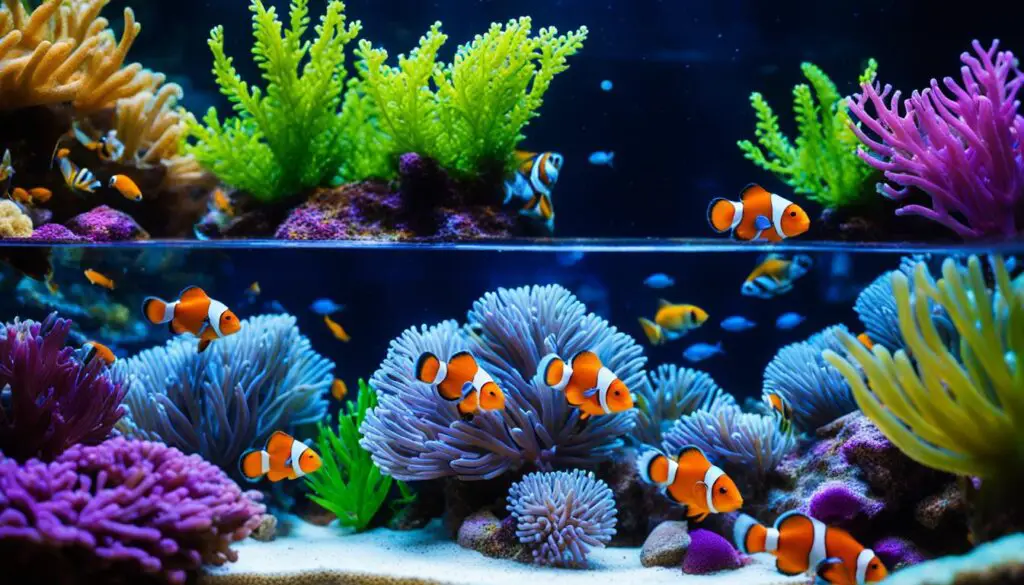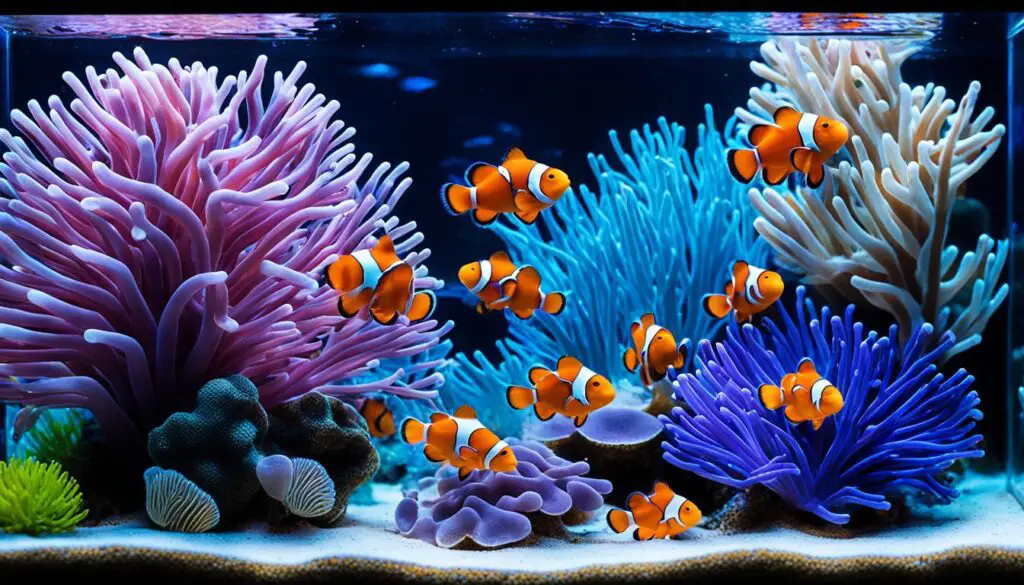Discover the Beauty of Clownfish Species: A Visual Guide
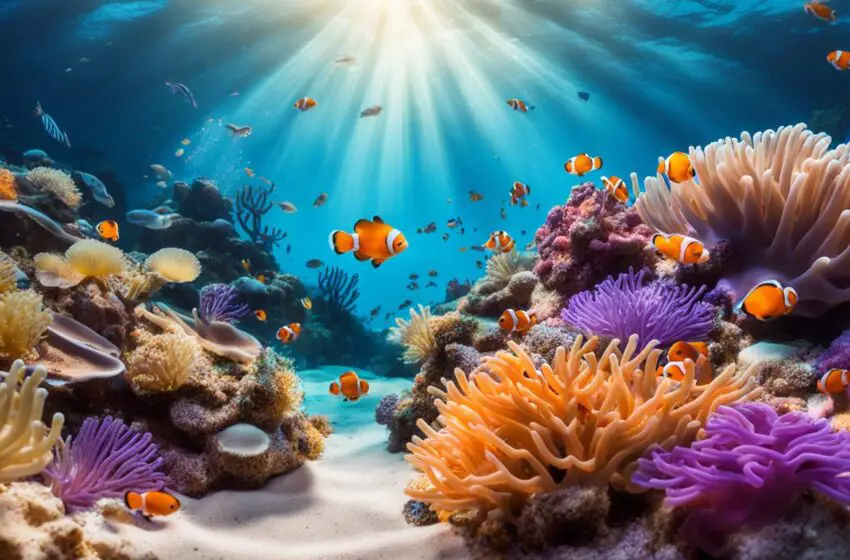
Clownfish are a top choice for those who love reef tanks. They are famous for their bright colors and special traits. With over 30 known species, it’s key to know the basics about them. This way, you can choose the right ones for your tank.
There are six main groups of clownfish, like the Skunk and Percula. They each have their own look and color scheme. Knowing about these groups helps when you’re picking which ones to get.
If you learn about the different groups and what they look like, you’ll make a better choice. This can help your tank be both beautiful and interesting.
Key Takeaways:
- Clownfish species come in over 30 identified varieties, each with its own unique characteristics and colorations.
- The six main complexes of clownfish include the Skunk, Percula, Maroon, Clarkii, Saddleback, and Tomato complexes.
- Understanding the different complexes is crucial in selecting the appropriate clownfish for your tank.
- Each complex has its own distinct features and color patterns, adding visual diversity to your aquarium.
- Selecting the right clownfish species will create a visually appealing and harmonious underwater habitat.
The Intricate Relationship Between Clownfish and Sea Anemones
Clownfish and sea anemones have a special bond that helps them both in the ocean. Most fish stay away from sea anemones because of their stinging tentacles. But clownfish found a way to live with them safely.
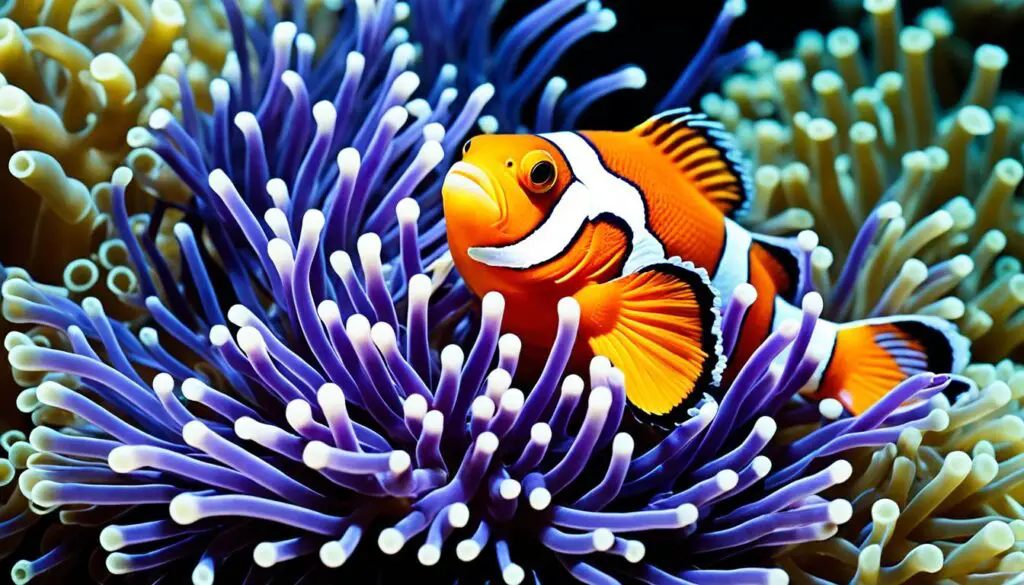
Clownfish are not hurt by the sea anemone’s sting. They hide among the tentacles to protect themselves from bigger fish. And they help keep their sea anemone homes healthy.
Clownfish and sea anemones help each other out. The fish scare off animals that might eat the sea anemone. They also keep the area clean by eating leftovers and grooming the anemone’s tentacles. In return, the anemone keeps the fish safe and well-fed. This partnership helps both of them thrive.
Clownfish prefer to live with sea anemones but can live without them. If there are no anemones around, they will live near corals or rocks. Anemones, however, create the best home for clownfish. They make the area safer for them, which is why they like living there.
“The relationship between clownfish and sea anemones shows how nature works together. It proves that animals can adapt and live in harmony in surprising ways.”
To keep clownfish happy in a tank, recreate their natural surroundings. While not all tanks need anemones, they boost the clownfish’s happiness. Certain types of anemones are friendly hosts to these fish, making them feel at home.
The story of clownfish and sea anemones teaches us a lot about nature. It shows the intricate ways animals depend on each other. This knowledge is key to ensuring the well-being of these creatures in artificial environments.
Important Facts About Clownfish Care and Behavior
When caring for clownfish in an aquarium, remember several key points. These fish are charming but need the right care to thrive.
Clownfish build up immunities to anemones in a fascinating way. They touch anemone tentacles which triggers a mucus layer on their skin. This layer protects them from the anemone’s stings, creating a supportive partnership.
Another interesting note is that clownfish can change their gender. If the main female dies, the leading male will turn into a female. This switch helps the group survive, showing the deep complexity of their society.
Clownfish might become territorial and aggressive, especially if they are not bred in captivity. Always choose captive-bred fish for your tank. This choice protects the wild and ensures your fish are used to life in an aquarium.
When it comes to food, clownfish like small crustaceans. Things like brine shrimp, mysis shrimp, and krill are great for them. Remember to feed them the right amount and mix up their food for good health and bright colors.
FAQ
Are there different species of clownfish?
Yes, there are over 30 known species of clownfish. Each type looks different with its own colors. They belong to groups like the Skunk, Percula, and Maroon complexes.
Do clownfish need sea anemones to survive?
No, clownfish don’t need sea anemones to live. Even though they often live with anemones, they can live without them. They can make homes in corals or by rocks. So, anemones aren’t a must for them in aquariums.
How can I care for clownfish in an aquarium?
Firstly, make sure your clownfish are from a safe, captive-bred environment. This prevents stress. If your clownfish can’t be found around anemones naturally, they might not need one to live. They like being fed foods like tiny crabs and shrimps.
Do clownfish change genders?
Yes, clownfish can change from male to female if needed. This happens when the female dies. It’s one of the fascinating things about these fish.

